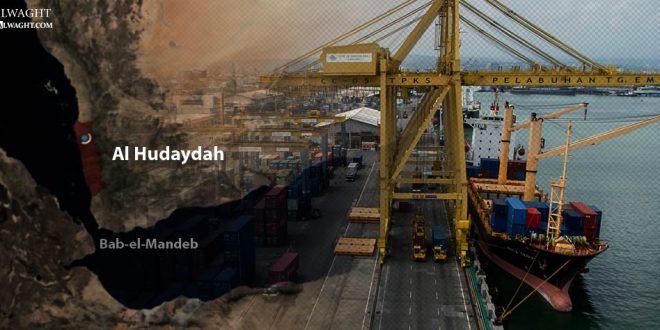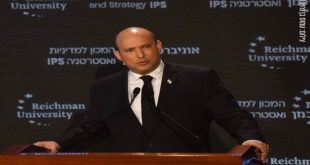Alwaght– The quagmire of Vietnam for the US is the closest parallel to the situation of Saudi Arabia in Yemen. Saudi-led coalition’s over-3-Year aggression against neighboring Yemen has only led to heavy financial, political, and military costs for the West-backed kingdom and humanitarian crisis for the Yemeni nation. Still, the high costs and the Yemeni plight have been far from keeping the Saudi rulers from continuing the erosive and apparently fruitless war against Sana’a. However, the Saudi forces’ advancement to Hudaydah port in southern Yemen appears to restore the hope to the Saudis, making them optimistic about a change in the situation and getting rid of the Yemen challenge.
Since last month, the Saudi-led Arab coalition’s forces moved towards the strategic Hudaydah, controlled by the Yemeni army and Ansarullah movement. They made progress from the port city’s southern fronts and along the coast on the strength of air cover provided to them. News reports emanating from the front line suggest various accounts of the degree of the aggression forces’ progression. Regardless of the advancement extent, a set of reasons could be enumerated for the coalition’s push to seize the port city from the Yemeni forces.
Split of Yemen
Three years of conflict has taught the inexperienced Saudi decision-makers that they will never manage to defeat the united Ansarullah and Yemen army for the full occupation of the Arab country. A war that was scheduled to end in fall of Sana’a the capital within three weeks, has lasted three years and shows no outlook for the end. Instead, Ansarullah has solidified its military and operational capabilities. Now seizure of the significant port is high on the agenda of Riyadh and its allies to realize the partition plan. Over the history of Riyadh-Sana’a relations, the Arab kingdom worked to keep Yemen weak. An impaired Yemen, they think, serves the Saudi Arabian interests.
Riyadh’s interests rest in exploiting Yemen’s strategic position and steering out of Yemeni home developments that could pose risks to the ruling Al Saud family’s throne. A strong Yemen is potentially dangerous to Saudi rule with regard to the two sides’ dispute s in oil-rich Asir, Jazan, and Najran provinces. Yemen has the second largest population in the Arab Peninsula after Saudi Arabia. Riyadh backed the six-region federation initiative, proposed in January 2014 by the then President Abdrabbuh Mansour Hadi, exposing its fear of a powerful central government in Sana’a.
Tightening the blockade to extract white flag from Yemenis
Presently, 90 percent of food and medicines come to Yemen via Hudaydah, making the port vital lifeline to Sana’a with some other ports under control of occupying forces. Since Saudi Arabia waged a war against Yemen on 27 March 2017, Saudis have take actions to wrest the major port from Ansarullah-led Yemeni forces. Air raids on the area’s infrastructure and Ansarullah positions is common during the three years of war.
According to the UN aid agencies, 60 percent of the Yemen’s population, i.e. 17 million people, are food insecure, with 7 million of them being in critical conditions. If this predicament does not ease, this number will touch 17 million Yemeni by end of the year, the UN adds. In general, over 22 million of the country’s 27-million population needs humanitarian aids. Hudaydah is a central aid intake point. So, if the port fall or its encirclement is completed, Sana’a and other Ansarullah-held cities will slump in dire straits economically and nutritionally. Saudi Arabia struggles to control Hudaydah to tighten the noose on the Yemenis. The Saudi leaders hope that a blend of war, military blockade, and famine will press Yemen into acceding to the Arab coalition’s demands. The plan alerted the UN, which on June 16, 2017, in a warning statement ask the Saudi-led forces to avoid staging an assault on the port city on the Red Sea coasts.
US-Oked Saudi-Emirati expansionism
Many analysts assert that an attraction by Saudi Arabia and the UAE to Yemen’s natural resources, beautiful islands, and geopolitically-important position stood as a key drive to the military campaign launching. The expansionist intentions of Abu Dhabi in Socotra Island on the southern coast substantiate the experts’ claims. The highly strategic Perim Island in the Bab-el-Mandeb Strait is controlled by the Israeli regime in the absence of a strong central government.
There is a notion that suggests the future strategic global competitions will take place in the Indian Ocean. 9 percent of the global trade and nearly 65 percent of the global oil use sea for transportation. With regard to energy significance and expanding marine trade, and the rise of China and India as new global powers, the Indian Ocean is expected to become central in the future rivalry. Even partial access or control of this ocean will be a determining factor in the countries’ power. That is why many countries, ranging from Yemen’s neighbors to the international powers, are closely following the nation’s political developments. A stable Yemeni government is key to get the green light for military presence in the strategic region.
On May 29, the Washington Post reported “A UN envoy, Martin Griffiths, is due to present a plan for peace talks to the Security Council next month. Officials have been encouraged by the apparent readiness of Houthi leaders to negotiate; they have offered a detailed, province-by-province plan for stopping the fighting, including their own missile firings. The problem lies with the Saudis and Emiratis, who dismiss the idea of such a settlement. The Emiratis appear more interested in consolidating their control over Yemeni ports than in ending the war.”
In their push for seizing Hudaydah, Riyadh and Abu Dhabi, with the US green light, are apparently disregarding the last year and recent warning about the humanitarian crisis in Yemen by the UNSC. Ansarullah leader Abdul-Malik Badreddin al-Houthi has asserted that Hudaydah seizure push is a joint American-Israeli decision. The Trump US has expanded its presence in Yemen’s coastal waters. The US navy vessels directly launched missile strikes on the Hudaydah-based Yemeni radar and missile systems after a miisile attack on the Saudi Al-Madinah frigate. After the attack, Riyadh called for the Yemeni port to be managed by the international, certainly US, forces.
 WILAYAH NEWS VOICE OF THE GLOBAL AWAKENING
WILAYAH NEWS VOICE OF THE GLOBAL AWAKENING






